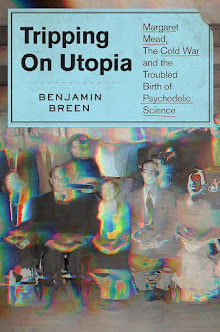Bandiagara Escarpment, central Mali.
Map showing Dogon settlement patterns.
Dogon migration into this inhospitable region had a clear historical rationale: notable for their early refusal to convert to Islam, the Dogon were forced by the antagonism of their neighbors to seek more defensible and remote positions in the desolate interior of Mali from around 1400 AD onward.This unique historical trajectory has also shaped their architecture: remarkable mud brick structures stacked vertically on seemingly impassable cliff faces.
Dogon cliff village, Bandiagara Escarpment. Photo credit Victor Engelbert.
| A cliff village originally built by the Tellem people, a civilization aboriginal to the region that the Dogon displaced. |
A Toguna, or meeting house and resting place for Dogon men.
Crocodile totem house in the village of Banani.
Dogon wall painting depicting circumcisions.
Dogon ancestral figure held by the Louvre, wood, c. 17th-18th century AD.
Bamana maternity figure, wood, date unknown.
Detail.
For more on Dogon architecture see this database of images and floorplans put together by a consortium of European ethnographers. Thanks to an influx of tourism in the last few decades there are countless images of the Dogon online; the Smithsonian Institution has a good image database.
Before stumbling across these images, my only exposure to the Dogon had been some passing references to a rather bizarre theory promulgated by the photographer of the black and white image posted above, the French anthropologist Marcel Griaule (1896-1956). According to Griaule, the Dogon people somehow possessed knowledge of Sirius B, a star that is not visible to the naked eye. In common with many other European intellectuals of the inter-war period, Griaule adhered to a rather eclectic set of mystical beliefs drawn from a melange of religious traditions (one scholar has coined the interesting phrase "ethnographic surrealism" to describe the relationship between his personal mysticism and anthropological practices.) Its not clear to me how far Griaule himself pushed the argument about Sirius B, or whether it was attributed to him by later quack authors, but it certainly offers an interesting insight into the preoccupations of the first wave of European anthropologists and ethnographers in the early 20th century.
Carl Sagan offers a skeptical overview of the controversy in his 1981 book Broca's Brain: Reflections on the Romance of Science . A pamphlet on the Dogon co-authored by Griaule is online here.
. A pamphlet on the Dogon co-authored by Griaule is online here.






3 comments:
I'm planning on starting a blog and have been doing a lot of soul-searching: what do I expect from it, what do I want from it, should I do this or that...
Well, I think I have some of my answers - if my blog influence just one person the way your blog influenced me with these few posts I've seen - I'll be happy c: !
I'm looking for info on where the Dogon came from exactly. I know its in North Africa, but im not sure if it was in Egypt or not.
@Ana summed up my feelings. all the best...
Post a Comment